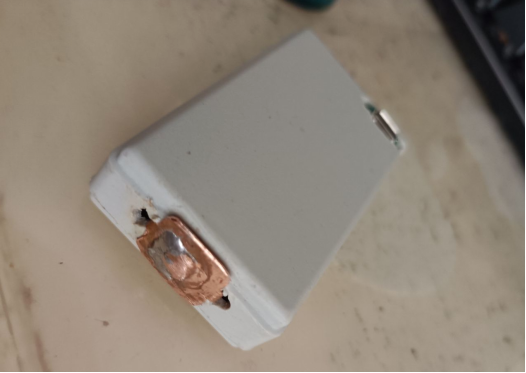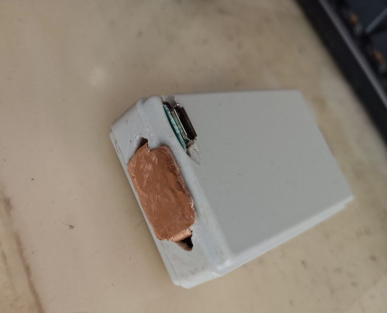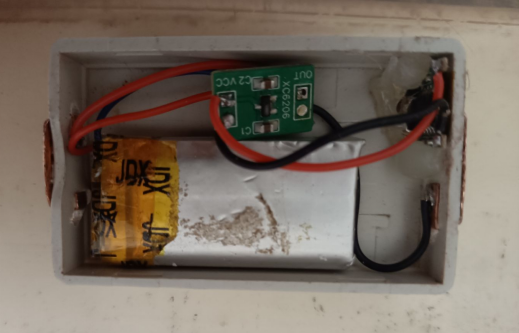
For those who frequently rely on devices powered by AA batteries, such as gas stoves, there's an intriguing DIY solution to explore. Crafting your own custom AA battery can be an interesting venture, providing a potential alternative for powering everyday appliances. Let's delve into the process and components that make this homemade battery a unique project.
Let's take a look at the finished product first.

The casing used is a waterproof junction box, with dimensions of 583515, which fits perfectly. The positive and negative terminals are made from cut-up copper tubes from an old air conditioner.


For the positive terminal, find a flat-head screw and punch a cap on it. If it cracks, you can solder it. Drill a hole on the side to thread out the charging port for easy recharging.
Now, let's take a look inside. It's quite simple: lithium battery + charging module + LDO.

A rough diagram of the components is shown below, from left to right and top to bottom: output positive, LDO module, lithium battery with built-in protection board, charging module, and output negative. The structure is straightforward, making it easy to handle.

One thing to note is that there's an overlap between the negative copper strip and the charging module, so use tape for insulation. This way, unless the battery's low voltage protection kicks in, the output remains at 1.5V.
What's the benefit? For instance, if you're using a gas stove at home, you won't have to hear that slow-paced ignition sound anymore.
Summary:
Incorporating a waterproof junction box as the casing, repurposed copper tubes from discarded air conditioners as terminals, and a customized charging setup, this homemade AA battery offers a practical solution for specific scenarios. By maintaining a consistent output of 1.5V, this battery can eliminate the slow ignition sounds of appliances like gas stoves. This inventive approach showcases how resourcefulness and creativity can reshape our everyday experiences, making mundane tasks more efficient and enjoyable.




